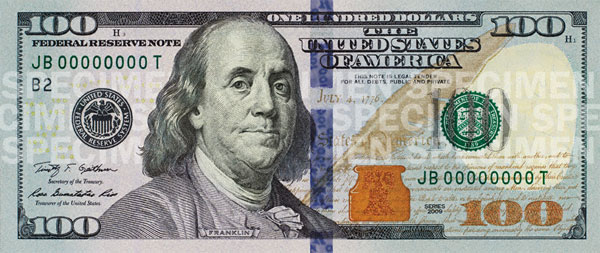How Does The Government Design New Currency?

This morning the Treasury Department unveiled its new $100 bill, which incorporates the latest in anti-counterfeiting technology. The bill also sports some of the most detailed art ever to appear on U.S. currency. Altogether, the note represents 14 years of work by the Federal Reserve, the Treasury Department, and the Bureau of Engraving and Printing (BEP).
Almost as soon as a new bill enters into circulation, the government begins working on the next design for that denomination. The government only redesigns bills to thwart forgers, so the Secret Service and the Federal Reserve decide which denominations get rebooted based on counterfeiting trends, Lorelei Pagano, cash manager at the Federal Reserve Board told Life's Little Mysteries.
Internationally, forgers copy the $100 most often, while domestically, criminals prefer the $20 note. Thus, the $100 and the $20 have received the top redesign priority, while the lowly $1 will never get new graphics, as no one tries to knock off those bills, Pagano said. The $5 note received a high priority redesign only after the Secret Service realized that counterfeiters could wash the ink off of $5 bills and print the image of $100s back onto them.
Any redesign of the nation's money begins with the BEP's in-house artists. The artists look to American history, older bills, and national symbols for inspiration, said Dawn Haley, a spokesperson for the BEP. After the artists settle on the graphics, representatives from the Federal Reserve, the Treasury Department, and the BEP meet to try to integrate new security features into the art without disrupting the unity of the image. The group then negotiates the balance between aesthetic and functional features. For more complex bills like the $20 and the $100, this process can take over a decade.
"Our goal is to redesign the bill every seven to ten years, Pagano said. It's a difficult process, but it needs to be difficult for us, because that makes it more difficult for the counterfeiter.
Sign up for the Live Science daily newsletter now
Get the world’s most fascinating discoveries delivered straight to your inbox.









